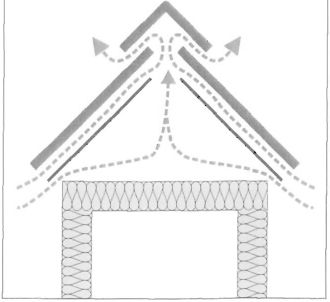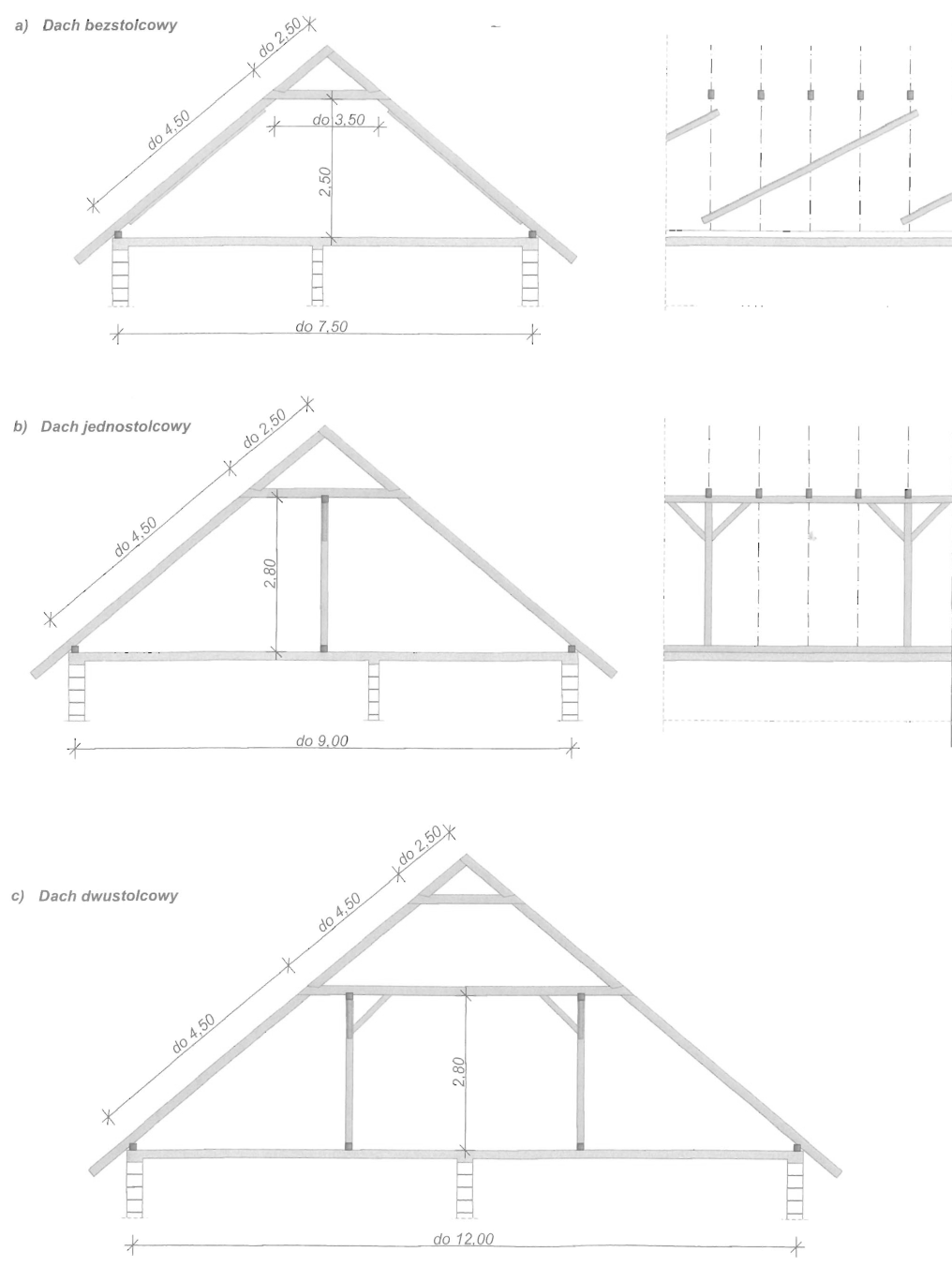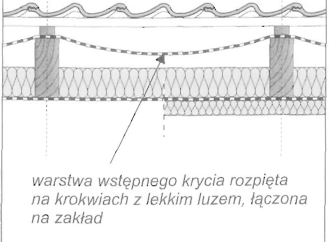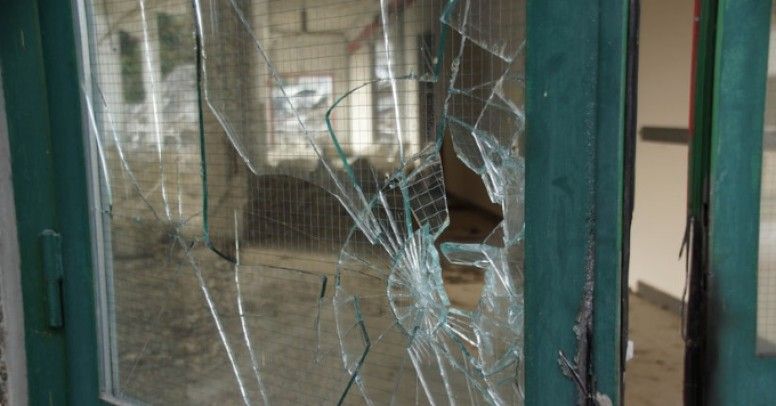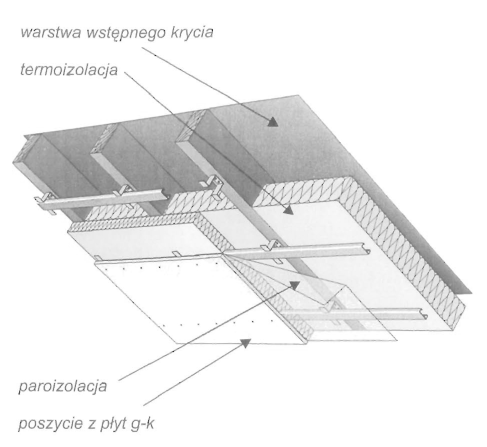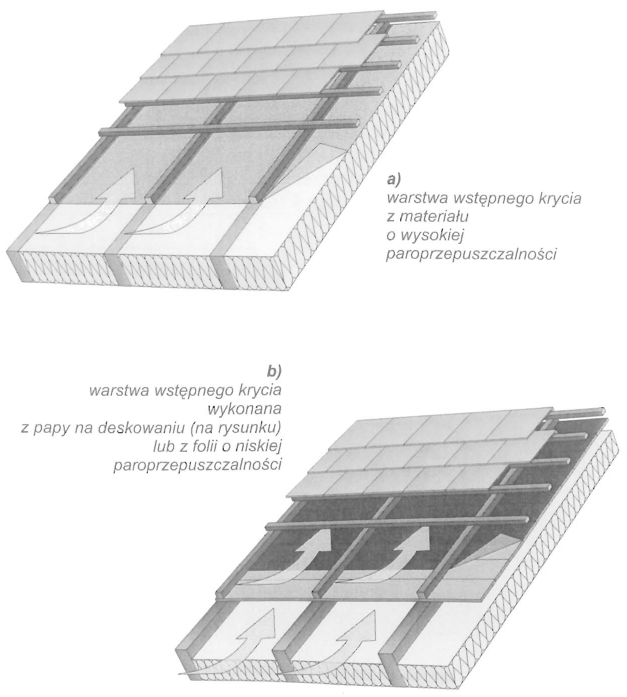 Sposoby wentylacji połaci dachowych:
Sposoby wentylacji połaci dachowych:
a) połać dachu z pojedynczą szczeliną wentylacyjną – wentylacja jednokanałowa,
b) połać dachu z podwójną szczeliną wentylacyjną – wentylacja dwukanałowa.
Pokrycie dachowe zabezpiecza przed przenikaniem do wnętrza wilgoci w postaci deszczu i -śniegu, ale nie rozwiązuje problemu wilgoci w wewnętrznych warstwach połaci dachowej. Podczas opadów połączonych z silnym wiatrem pewna ilość wilgoci może przedostać się pod dachówki. Dodatkowo w połać dachu wnika od strony wnętrza para wodna. Nie stanowi ona zagrożenia dopóki nie ulegnie ochłodzeniu w punkcie rosy, w którym następuje wykroplenie. Szczególnie niebezpieczne są skropliny powstające w niedostatecznie przewietrzanych warstwach dachu, gdzie dochodzi do szkodliwego nasiąknięcia wilgocią więźby dachowej, termoizolacji i łat.
Największe niebezpieczeństwo zawilgocenia spowodowane zjawiskiem kondensacji pary wodnej występuje zimą, gdy różnica temperatur między wnętrzem a zewnętrzem jest największa.
Aby konstrukcja dachu nie uległa uszkodzeniu wskutek zawilgocenia, należy jak najszybciej usunąć wilgoć, której kumulacja obniża parametry termoizolacyjne dachu. Najlepszą metodą likwidacji wilgoci jest wentylowanie poprzez szczeliny wentylacyjne, gdyż przepływające swobodnie szczelinami powietrze usuwa parę wodną. Prawidłowo wykonana wentylacja skutecznie osusza cały dach poprzez ruch powietrza wywołany wiatrem i nagrzewaniem połaci dachowej promieniami słonecznymi.
